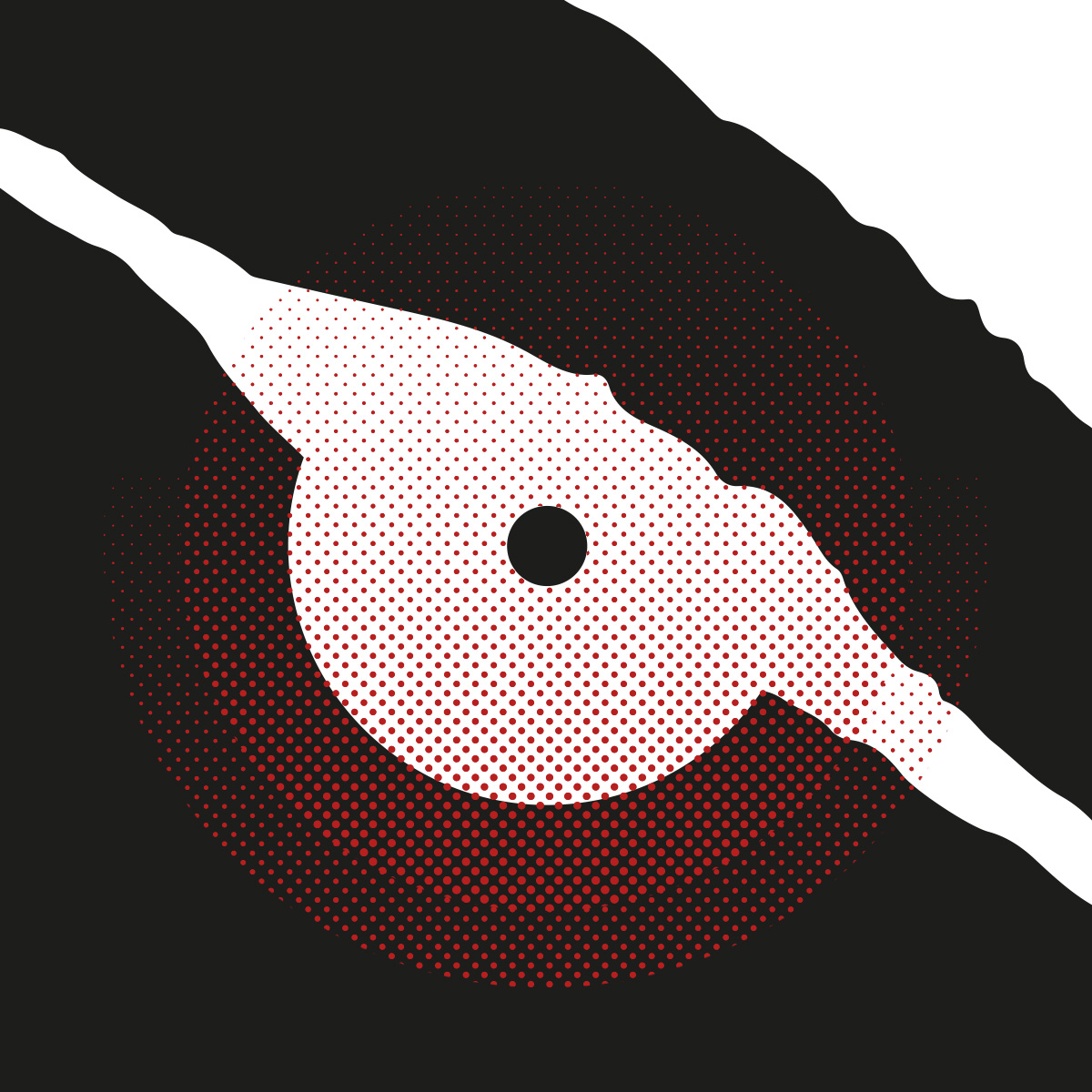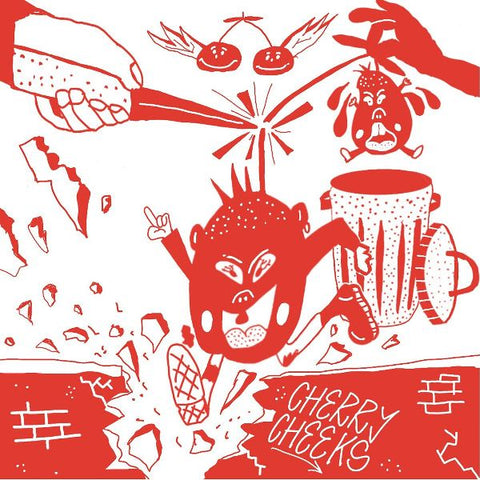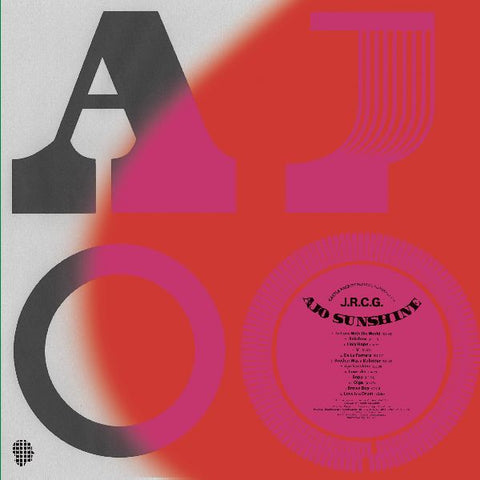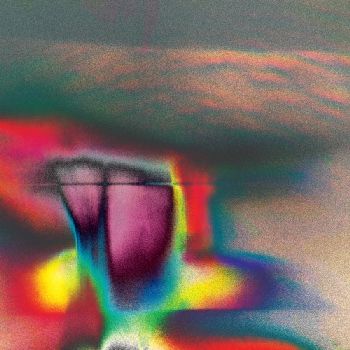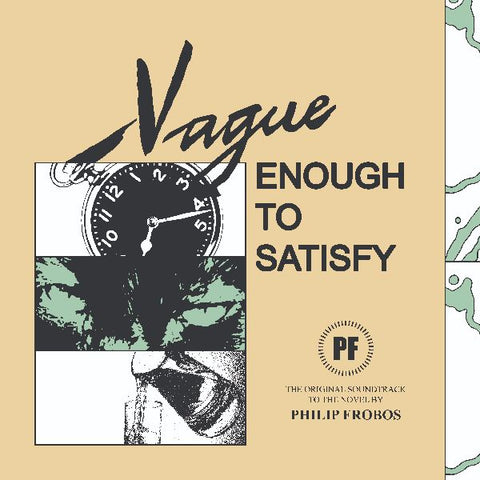
Born Bad
BERNARD ESTARDY - Space Oddities 1970-1982 LP
$39.95
Inner sleeve with liner notes.
A master of the mixing board, from the late 60s until the 90s Bernard Estardy was the wizard of French musical recordings. As head of CBE studios, he shaped everything from Gérard Manset’s concept albums to Claude François’ hit singles, Françoise Hardy’s delicate tear-jerkers and Michel Sardou’s soul-stirrers. This “giant” had his hand in the whole range of mainstream French music by making his studio a veritable playground for experimentation. His legendary album “La Formule du Baron,” released in 1969, and the eight LPs of production music he made between 1974 and 1978 for Tele Music are vivid proof. In the CBE studio, which she runs today, his daughter Julie Estardy discussed his singular career.
My dad came from a well-off family. He was born in 1939 and never knew his father, who died in May 1940 during the war. His mother raised him alone, and then she remarried and he lived with a stepfather who was pretty hard on him. My dad lived in a mansion in the 17th arrondissement of Paris after a period out of the city to escape wartime conditions. At 7, he was already an exceptional child, running around with screwdrivers and hammers and dismantling everything in the house. He was curious, a great dreamer and quite timid. He wanted to understand the world, and tried by all means possible to escape his home.
How did he discover music?
It was quite early. My grandmother enjoyed singing opera and her son wanted to become a conductor! One day he sat down at the family piano and played a Chopin waltz for his mother. He had taught himself, by listening to the piece. He had an innate talent, but the year of piano lessons he took at the age of 8 bored him, especially as he already played music constantly with his friends. Music was always present in his life, but the family’s tradition was in engineering. That’s why he studied public works. He was really interested in mathematical research and physical chemistry. I don’t think he saw himself taking a traditional job. I guess he worked for two months after receiving his degree, during which he laid the foundations of a bridge that was built afterward. He was very proud of it, but being in a normal job was difficult for him.
Was mathematics also a creative process for him?
Yes, exactly. It was, in addition, a pathway to the esoteric, to understand complicated concepts such as space-time, black holes, material and non-material, and to make them comprehensible in simple terms. But his scientific orientation was also why, at the age of 10, he managed to modify his mother’s tape recorder to listen to his 45s. He was really ingenious and remained so throughout his life.
How did he make the transition from engineering to the stage?
It was not a sudden switch from one to the other. This was the epoch of “Boul’Mich’ (boulevard St-Michel),” when young people would study intensely but then go out in the evening and jam in jazz clubs. He played at the Golf Drouot and Le Chat Qui Pêche on an electric bass he built himself. At that time, he was into “pure” jazz, which represented freedom for him, and which exasperated his parents. During these nights, he auditioned for Bill Coleman who was preparing a tour in France. Once on tour, he worked relentlessly to find his style. He became part of a trendy crowd, turning up in Saint Tropez at Eddie Barclay’s parties with Bardot and Gainsbourg. His family did not help him because he did not want to follow their expectations. His child had just been born, so he was obliged to accept all jobs he was offered, such as playing the piano accompaniment for a bodybuilding competition. Then he met Nino Ferrer, who was looking for an organist.
What was Nino Ferrer up to at that time?
He was just starting his musical career. They composed “Mirza” in the course of live shows. Initially it was a trio called Les Gottamou with Richard Hertel. But, as their success grew, the star distanced himself from the group and they gradually moved away from him, even playing behind the curtain. It was already difficult to get paid at the end of the concert, but being obliged to play behind the curtain was the last straw. That’s when Georges Chatelain made an offer to my father to launch a studio.
How did their partnership begin?
Georges Chatelain was his classmate in the Chaptal secondary school, so they had known each other for years. The pair worked well together and were complementary: Georges was handsome, a smooth talker, very worldly and had been trained as an audio engineer. My father was self-taught, gruffer, but boy, he was good! Together they built CBE studios[1] on rue Championnet. My father constructed equipment based on the designs of an engineer, Gunther Loof. Trained by Gunther, with whom he developed a real complicity, he immediately wound up behind the mixing boards.
How did they want to stand out from other studios in Paris?
They wanted to recreate the intimacy of a living room in which they would record with their friends. Before them, the studio was guys in white smocks who never let the needles go into the red. With the help of Gunther, my father threw off the shackles of tradition, in particular by exploiting multiple tracks.
Do you think your father found his true place behind the mixing board?
My father was rather shy and neurotic. He was 2.05 meters tall and, finally, being hidden in the shadows of a grotto suited him, especially since he was working directly with artists. This liberated him and he became a sort of conductor within this cocoon.
How did the studio make its reputation?
It happened very quickly; they were operating in a very small milieu. Georges went to the nightclubs looking for customers, in particular Jack Robinson, who brought in Johnny Hallyday, and then Lee Hazelwood. Very quickly, the artists realized that the studio offered them the American sound they had been seeking abroad. Abbey Road was doing the same thing, on a smaller scale. And, above all, my father’s brilliant tinkering attracted the likes of Gérard Manset, who wanted to experiment, as they went on to do on “Manset 68” and “La mort d’Orion.” This was a time when people wanted to break with the traditions of audio, when the studio became a full-fledged musical instrument via my father’s ingenuity. Very soon, people came for my father’s sound, the atmosphere he brought to a recording session: casual and light-hearted. He worked quickly, which fostered creativity.
The studio opened in 1966, and in 1970 your father also started making production music…
Georges made a deal with Roger Tokarze of Tele Music (a firm selling production music to professionals as a commodity) to make extra money, because they were not really raking it in with the studio. Success came later, in 1974, with the arrival of big mainstream artists, so between sessions, my father took a seat behind his organ or recorded a musician who was passing through to create these albums of production music that are amalgamations of fragments and scattered ideas. It was pure empiricism. There was no fundamental vision, just lots of improvisations in search of a dynamic.
Is the functional character of this music, its lack of ambition, that was finally liberating for him?
Absolutely! He was not at all taking these pieces seriously, it was really the kind of improvisation that he could have done in his living room. Even if something was not quite right with the piece, it was not a big deal. There was a kind of sonic freedom where he experimented with dissonant sounds. He allowed himself to do things in this context that he would never have done elsewhere. All that music was jostling around in his head! He had to let it burst out at some point. He told himself, “I need to be productive.” He did not necessarily seek originality; that didn’t interest him. When you listen carefully, these compositions have some very traditional aspects, but leopards do not change their spots and his experimental side quickly resurfaces. All the tracks composed for Tele Music were, above all, excuses to play musical games, and to engage in wordplay, sometimes quite smutty.
How did the making of “La Formule du Baron” fit into this context? Did working on production music give him the opportunity to make a personal mark with this album?
No, that has nothing to do with it. He undoubtedly kept aside certain songs composed for Tele Music and used them for “La Formule du Baron.” He didn’t want to give them to Tokarze because he thought they were too good. In listening to them again, he must have found a consistent thread. I think that, just the same, he had a secret desire to showcase himself, in his own way. For the concept of the album, my father gave life to a character that already existed: he had called himself “The Baron” since his adolescence. Georges had fun adding a visual dimension. “La Formule du Baron” allowed him to try his hand at a collection of tracks without apparent coherence: it was pure experimentation, to see how far he could really go. He was always into pushing things farther, wondering if he had arrived at the ultimate limit. He always said, “The day you arrive at the top, you can only fall.” It was his constant quest. Afterward, in a similar way, he experimented with other artists by slipping three notes from the ARP into a Joe Dassin song or into “Big Bisou” by Carlos. We now come to see him for that quality; that’s why he became a prominent arranger during the 80s.
Was he influenced by experimental pop as it developed during the 70s?
It wasn’t really any influence on him. The quest for new sounds is shared by everyone worldwide, working in parallel. For him, this quest began in 1967 when he was working at the mixing board. For example, his phasing experiments with Manset at the end of 1968. Exploitation of multitrack recording, running tapes backwards, specific pre-amps built for each track to have an individual sound color, those are the kind of things he did. “La Formule du Baron” is a demonstration of these techniques. In the late 70s and early 80s, he went on a quest for arrangements.
Did he care about the fate of records on which he worked?
He didn’t really care about that either, because he didn’t have the time, he was working non-stop, he would exhaust three assistants in a single day, so if that information did not come to him, he didn’t go looking for it. My father always said that his job was to “transform shit into gold,” and, I emphasize, that doesn’t mean to screw people over, but rather to make popular music, to make people happy. He became the guy who could save songs, whether it was “Elle est d’ailleurs” by Pierre Bachelet or “Tout doucement” by Bibie. He was at the top of his game as an arranger, working with Marc Lavoine, Francis Cabrel, and Céline Dion, who was arriving on the scene.
How did he pass his final years?
From the mid-90s, he wasn’t really keeping pace with current music. And especially with the people who were making it. During recording sessions, people no longer laughed as they did before, they were more serious. He was still making music, sometimes in Paris, sometimes in the south, but the golden age, where he had been a dominant force, had ended. He preferred to tinker with his train: two kilometers of track built through the mountains using rails from a mine. He kept on playing with things until the end.
[1] For Chatelain-Bisson-Estardy; Bisson was Georges Chatelain’s sister
A master of the mixing board, from the late 60s until the 90s Bernard Estardy was the wizard of French musical recordings. As head of CBE studios, he shaped everything from Gérard Manset’s concept albums to Claude François’ hit singles, Françoise Hardy’s delicate tear-jerkers and Michel Sardou’s soul-stirrers. This “giant” had his hand in the whole range of mainstream French music by making his studio a veritable playground for experimentation. His legendary album “La Formule du Baron,” released in 1969, and the eight LPs of production music he made between 1974 and 1978 for Tele Music are vivid proof. In the CBE studio, which she runs today, his daughter Julie Estardy discussed his singular career.
My dad came from a well-off family. He was born in 1939 and never knew his father, who died in May 1940 during the war. His mother raised him alone, and then she remarried and he lived with a stepfather who was pretty hard on him. My dad lived in a mansion in the 17th arrondissement of Paris after a period out of the city to escape wartime conditions. At 7, he was already an exceptional child, running around with screwdrivers and hammers and dismantling everything in the house. He was curious, a great dreamer and quite timid. He wanted to understand the world, and tried by all means possible to escape his home.
How did he discover music?
It was quite early. My grandmother enjoyed singing opera and her son wanted to become a conductor! One day he sat down at the family piano and played a Chopin waltz for his mother. He had taught himself, by listening to the piece. He had an innate talent, but the year of piano lessons he took at the age of 8 bored him, especially as he already played music constantly with his friends. Music was always present in his life, but the family’s tradition was in engineering. That’s why he studied public works. He was really interested in mathematical research and physical chemistry. I don’t think he saw himself taking a traditional job. I guess he worked for two months after receiving his degree, during which he laid the foundations of a bridge that was built afterward. He was very proud of it, but being in a normal job was difficult for him.
Was mathematics also a creative process for him?
Yes, exactly. It was, in addition, a pathway to the esoteric, to understand complicated concepts such as space-time, black holes, material and non-material, and to make them comprehensible in simple terms. But his scientific orientation was also why, at the age of 10, he managed to modify his mother’s tape recorder to listen to his 45s. He was really ingenious and remained so throughout his life.
How did he make the transition from engineering to the stage?
It was not a sudden switch from one to the other. This was the epoch of “Boul’Mich’ (boulevard St-Michel),” when young people would study intensely but then go out in the evening and jam in jazz clubs. He played at the Golf Drouot and Le Chat Qui Pêche on an electric bass he built himself. At that time, he was into “pure” jazz, which represented freedom for him, and which exasperated his parents. During these nights, he auditioned for Bill Coleman who was preparing a tour in France. Once on tour, he worked relentlessly to find his style. He became part of a trendy crowd, turning up in Saint Tropez at Eddie Barclay’s parties with Bardot and Gainsbourg. His family did not help him because he did not want to follow their expectations. His child had just been born, so he was obliged to accept all jobs he was offered, such as playing the piano accompaniment for a bodybuilding competition. Then he met Nino Ferrer, who was looking for an organist.
What was Nino Ferrer up to at that time?
He was just starting his musical career. They composed “Mirza” in the course of live shows. Initially it was a trio called Les Gottamou with Richard Hertel. But, as their success grew, the star distanced himself from the group and they gradually moved away from him, even playing behind the curtain. It was already difficult to get paid at the end of the concert, but being obliged to play behind the curtain was the last straw. That’s when Georges Chatelain made an offer to my father to launch a studio.
How did their partnership begin?
Georges Chatelain was his classmate in the Chaptal secondary school, so they had known each other for years. The pair worked well together and were complementary: Georges was handsome, a smooth talker, very worldly and had been trained as an audio engineer. My father was self-taught, gruffer, but boy, he was good! Together they built CBE studios[1] on rue Championnet. My father constructed equipment based on the designs of an engineer, Gunther Loof. Trained by Gunther, with whom he developed a real complicity, he immediately wound up behind the mixing boards.
How did they want to stand out from other studios in Paris?
They wanted to recreate the intimacy of a living room in which they would record with their friends. Before them, the studio was guys in white smocks who never let the needles go into the red. With the help of Gunther, my father threw off the shackles of tradition, in particular by exploiting multiple tracks.
Do you think your father found his true place behind the mixing board?
My father was rather shy and neurotic. He was 2.05 meters tall and, finally, being hidden in the shadows of a grotto suited him, especially since he was working directly with artists. This liberated him and he became a sort of conductor within this cocoon.
How did the studio make its reputation?
It happened very quickly; they were operating in a very small milieu. Georges went to the nightclubs looking for customers, in particular Jack Robinson, who brought in Johnny Hallyday, and then Lee Hazelwood. Very quickly, the artists realized that the studio offered them the American sound they had been seeking abroad. Abbey Road was doing the same thing, on a smaller scale. And, above all, my father’s brilliant tinkering attracted the likes of Gérard Manset, who wanted to experiment, as they went on to do on “Manset 68” and “La mort d’Orion.” This was a time when people wanted to break with the traditions of audio, when the studio became a full-fledged musical instrument via my father’s ingenuity. Very soon, people came for my father’s sound, the atmosphere he brought to a recording session: casual and light-hearted. He worked quickly, which fostered creativity.
The studio opened in 1966, and in 1970 your father also started making production music…
Georges made a deal with Roger Tokarze of Tele Music (a firm selling production music to professionals as a commodity) to make extra money, because they were not really raking it in with the studio. Success came later, in 1974, with the arrival of big mainstream artists, so between sessions, my father took a seat behind his organ or recorded a musician who was passing through to create these albums of production music that are amalgamations of fragments and scattered ideas. It was pure empiricism. There was no fundamental vision, just lots of improvisations in search of a dynamic.
Is the functional character of this music, its lack of ambition, that was finally liberating for him?
Absolutely! He was not at all taking these pieces seriously, it was really the kind of improvisation that he could have done in his living room. Even if something was not quite right with the piece, it was not a big deal. There was a kind of sonic freedom where he experimented with dissonant sounds. He allowed himself to do things in this context that he would never have done elsewhere. All that music was jostling around in his head! He had to let it burst out at some point. He told himself, “I need to be productive.” He did not necessarily seek originality; that didn’t interest him. When you listen carefully, these compositions have some very traditional aspects, but leopards do not change their spots and his experimental side quickly resurfaces. All the tracks composed for Tele Music were, above all, excuses to play musical games, and to engage in wordplay, sometimes quite smutty.
How did the making of “La Formule du Baron” fit into this context? Did working on production music give him the opportunity to make a personal mark with this album?
No, that has nothing to do with it. He undoubtedly kept aside certain songs composed for Tele Music and used them for “La Formule du Baron.” He didn’t want to give them to Tokarze because he thought they were too good. In listening to them again, he must have found a consistent thread. I think that, just the same, he had a secret desire to showcase himself, in his own way. For the concept of the album, my father gave life to a character that already existed: he had called himself “The Baron” since his adolescence. Georges had fun adding a visual dimension. “La Formule du Baron” allowed him to try his hand at a collection of tracks without apparent coherence: it was pure experimentation, to see how far he could really go. He was always into pushing things farther, wondering if he had arrived at the ultimate limit. He always said, “The day you arrive at the top, you can only fall.” It was his constant quest. Afterward, in a similar way, he experimented with other artists by slipping three notes from the ARP into a Joe Dassin song or into “Big Bisou” by Carlos. We now come to see him for that quality; that’s why he became a prominent arranger during the 80s.
Was he influenced by experimental pop as it developed during the 70s?
It wasn’t really any influence on him. The quest for new sounds is shared by everyone worldwide, working in parallel. For him, this quest began in 1967 when he was working at the mixing board. For example, his phasing experiments with Manset at the end of 1968. Exploitation of multitrack recording, running tapes backwards, specific pre-amps built for each track to have an individual sound color, those are the kind of things he did. “La Formule du Baron” is a demonstration of these techniques. In the late 70s and early 80s, he went on a quest for arrangements.
Did he care about the fate of records on which he worked?
He didn’t really care about that either, because he didn’t have the time, he was working non-stop, he would exhaust three assistants in a single day, so if that information did not come to him, he didn’t go looking for it. My father always said that his job was to “transform shit into gold,” and, I emphasize, that doesn’t mean to screw people over, but rather to make popular music, to make people happy. He became the guy who could save songs, whether it was “Elle est d’ailleurs” by Pierre Bachelet or “Tout doucement” by Bibie. He was at the top of his game as an arranger, working with Marc Lavoine, Francis Cabrel, and Céline Dion, who was arriving on the scene.
How did he pass his final years?
From the mid-90s, he wasn’t really keeping pace with current music. And especially with the people who were making it. During recording sessions, people no longer laughed as they did before, they were more serious. He was still making music, sometimes in Paris, sometimes in the south, but the golden age, where he had been a dominant force, had ended. He preferred to tinker with his train: two kilometers of track built through the mountains using rails from a mine. He kept on playing with things until the end.
[1] For Chatelain-Bisson-Estardy; Bisson was Georges Chatelain’s sister
